I just clicked through nearly 40 pages of google image results looking for one good image of an arborvitae hedge. That I found NONE is my first piece of damning evidence in a little rant about arborvitae hedging and how NOT to use these beautiful evergreen trees and shrubs.
Are you tired of the typical Arborvitae hedge disappointments? You’re not alone! Many homeowners have been misled by the misconceptions surrounding Arborvitae and its versatility in landscaping. Let’s delve into the world of more unique Arborvitae varieties. There are so many more creative ways to incorporate them into your landscape to unearth their true potential.
The Arborvitae Hedge Misconception:
First, let’s address the common misconception about the Arborvitae hedge. Arborvitaes like ‘Green Giant’, ‘Nigra,’ and ‘Emerald Green’ are frequently recommended for hedging due to their rapid growth and screening capabilities. The problem is they are naturally conical in shape, making it impossible to achieve the desired square, stately, English-style hedges.
The expectation is this:
 and this:
and this: 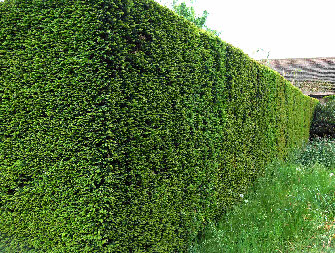
(never-mind that neither of these are arborvitae, they are, in fact, yew…but I found them under arborvitae in google results – Ahem – never fully trust the internet)
And the reality is this (at best):
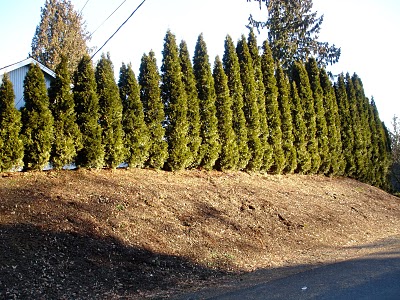
I suppose arborvitae is fine if you want a hedge with holes, no uniformity across the sides, and inconsistent heights. (I actually happen to like their wilder and more natural look). Thuja can also struggle to recover from common winter burn, which is a recipe for an arguably effective but otherwise terrible-looking privacy screen.
I know I am shaking the tree here, but the common mislabeling of images (on many landscaper’s websites) leads me to believe there is a bit of overselling going on in the landscape industry, which explains why there are far too many wannabe-stately arborvitae hedges that are really just dumb looking line ups of mismatched cones. (at least my corner of the world).
Arborvitaes do not equal Taxus (or boxwood, or myrtle, or privet), and I’m tired of the disappointing and lackluster results when they are misused.
But the thing is – Arborvitae are fantastic plants – and they are native to North America – it’s just that they are best when not expected to do something they aren’t very good at.
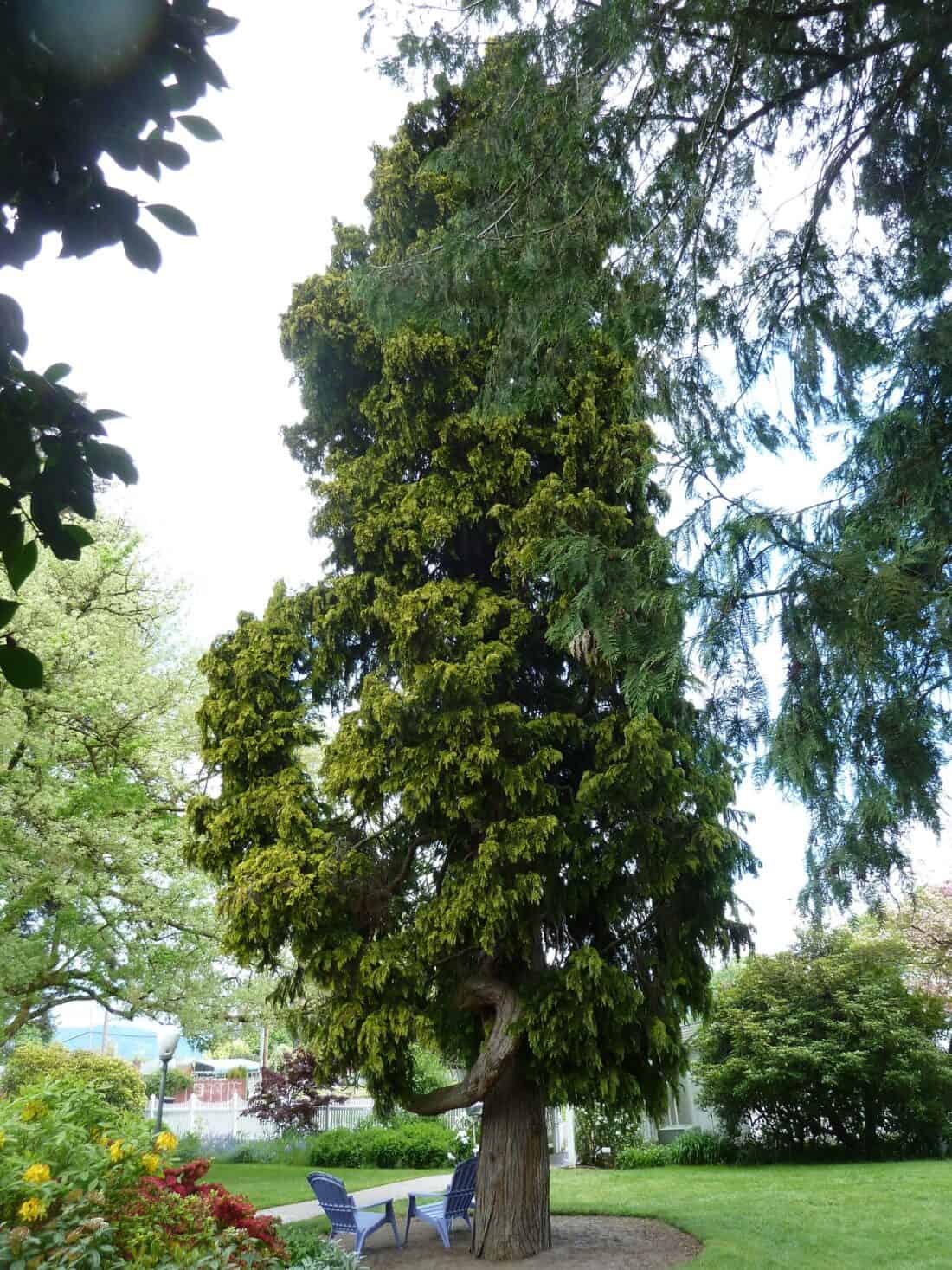
How to use Arborvitae in your garden (so it doesn’t look stupid)
Don’t get me wrong, I actually really like the arborvitae plant – either when used interestingly or of interesting variety. What I object to is constantly planting them in a way that makes them look like awkward underachievers. They aren’t going to become rectangular English-style hedges that everyone longs for. In fact, here in New England, there really isn’t a great alternative to get that look. Privet does not do well north of the relatively mild ocean adjacent gardens of Long Island’s Hamptons.
(I swear this is where everyone around here first falls for the allure of the walled garden that has come to denote private wealth and status.) I get it – it’s just down the coast – but please – get it out of your head – private doesn’t like New England, except in the mildest of microclimates.
Boxwood and myrtle do not get to the same height (and they can bring along other pest and disease challenges). White pine, rhododendron, and other native evergreens can be great for privacy, but they aren’t going to take on that shape and look of tidy clipped hedges. Yew is only marginally hardy throughout the northeast and is typically a favorite binge of local deer. So that is not recommended. This is sometimes hard to hear – but the best way to enjoy the stately hedges of classic European gardens is to go to Europe.
In America – you really ought to adjust your expectations to a palette of plants that work in your region. Stop trying to force a square peg into a round hole. (or in the case of arborvitae – a round conical tree into a voluptuous sculpted square).
Thuja’s are bad at being formal hedges
Take, for example, the stout, chubby variety of Berkman’s Golden Arborvitae – it is an excellent and fun arborvitae. Their happy, rotund nature and fresh color would be a welcome addition to many planting schemes. But as a hedge, they would look like a bunch of flabby soldiers who clearly aren’t cut out for their job.

The thujas that are commonly recommended for hedges go by the names of ‘Green Giant’, ‘Nigra’ and ‘Emerald Green’ (to name a few). Here is what you need to understand – their general form is a cone. (love it or leave it, but don’t plan to change it. You have little chance of getting a smooth square hedge from this). Yes, they will grow relatively quickly, they will provide screening, and to their credit, some of the best performers are native to the region. It is just that they aren’t going to look like what most people hope for – stately green english-style rectangular hedges.
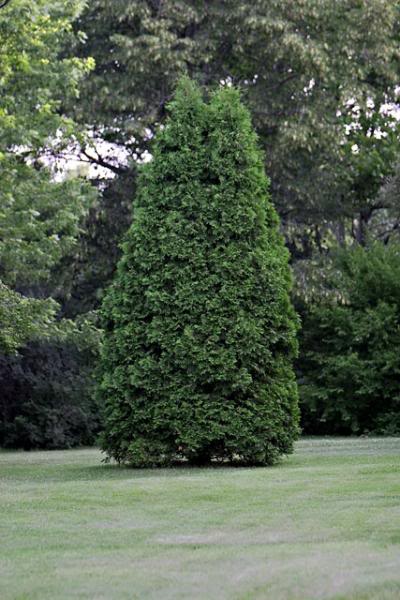
The cone shape is very nice. Cones look best when clumped together (not in a straight line) or when they stand in a zig zag fashion. I most like to see them interspersed with other plants. Ultimately, they are a little like people; they naturally carry their chub in slightly different places. If you use a little distraction, they can all look consistent and cohesive. But if you line them up, you will suddenly highlight their differences.
Side Note – Another Arborvitae Rant
And speaking of differences…I have another little arborvitae rant. The word “arborvitae” has become synonymous with ‘green cone that you plant along the edges of your property or as a “foundation plant”. As a word, it seems to represent anything green and conical and is commonly asked for by homeowners who have no idea that there are literally hundreds of varieties of Thuja and that most of the time, what they are hoping for isn’t even arborvitae. It’s like asking for creamer and being mad if you were given the powdered stuff. If you want half-and-half or half-fat almond milk, you need to say that.
You can’t just throw around the word ‘arborvitae’ and expect people to know what you are talking about. (unless you are speaking with a similarly underinformed person). There are literally hundreds of very different, interesting and exciting ‘arborvitae’; it is worth exploring some other more unique varieties. Here are a few of my favorites:
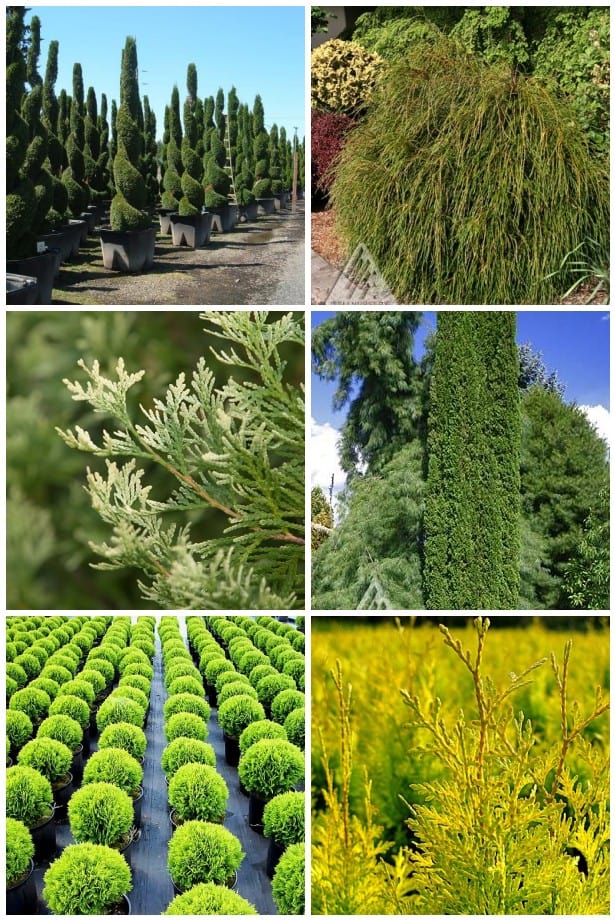
6 More Interesting Arborvitae (That are also Hedging Shrubs)
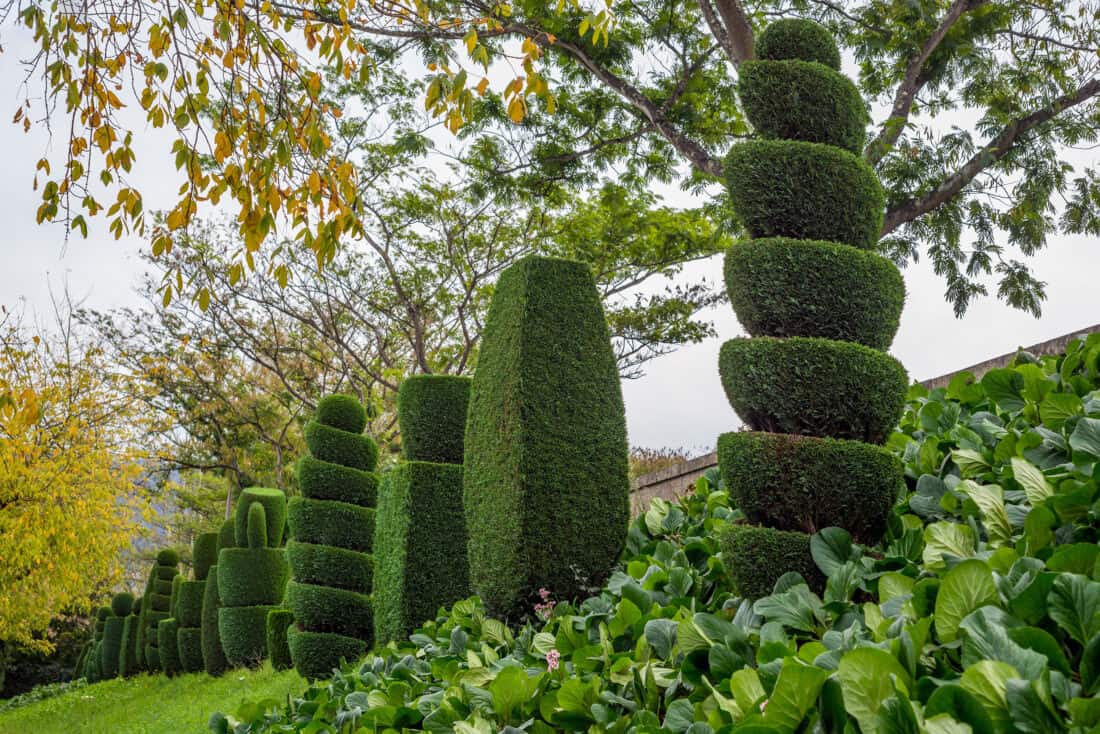
Each of the mentioned Thuja varieties offers unique design benefits, making them excellent choices for diverse landscaping styles and applications. Here’s a description of the design benefits for each tree:
Thuja plicata “Emerald” Clipped Spirals
Design Benefits:
- Architectural Elegance: The clipped spirals of Thuja plicata “Emerald” add a touch of architectural elegance to any landscape. Their precise and well-defined forms make them stand out as focal points or accent pieces.
- Formality and Symmetry: These clipped spirals lend themselves well to formal gardens, where symmetry and clean lines create a polished and refined look.
- Versatility: Their compact and well-maintained appearance makes them suitable for small gardens, containers, or as part of a topiary display.
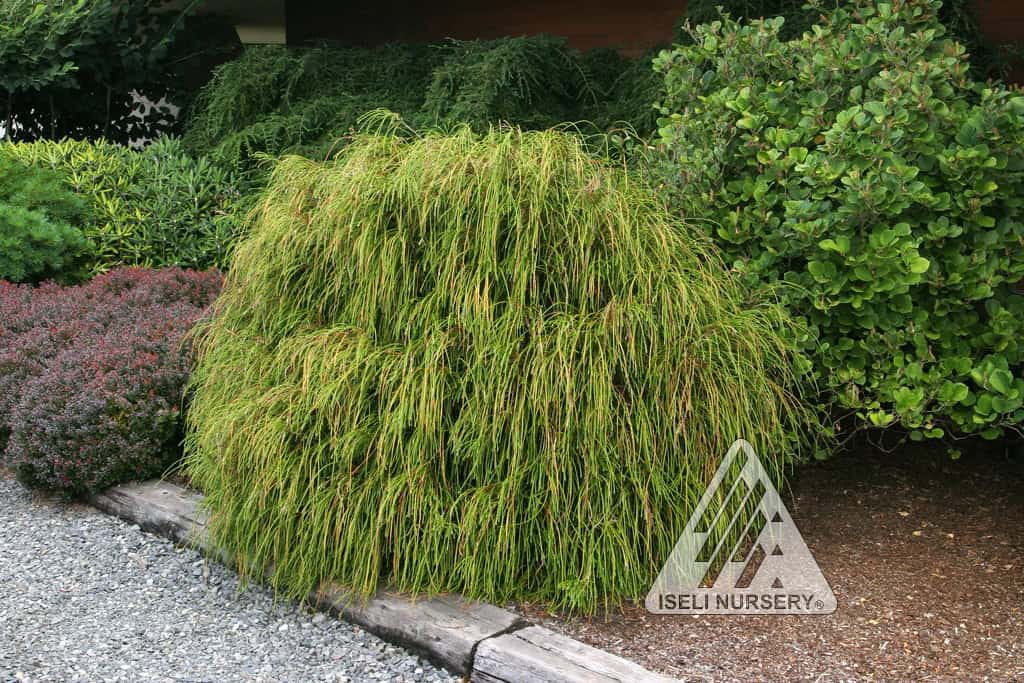
Thuja plicata ‘Whipcord’
Design Benefits:
- Textural Interest: The unique whipcord-like foliage of this variety introduces captivating texture to your landscape. It provides an intriguing contrast when combined with other plants or set against smooth surfaces.
- Versatile Size: Thuja plicata Whipcord’s compact size makes it perfect for various design elements, including rock gardens, borders, and even modern or minimalist landscapes.
- Dramatic Cascading Effect: Its drooping and trailing branches create a graceful, cascading effect, making it an eye-catching addition to hanging baskets or elevated planters.
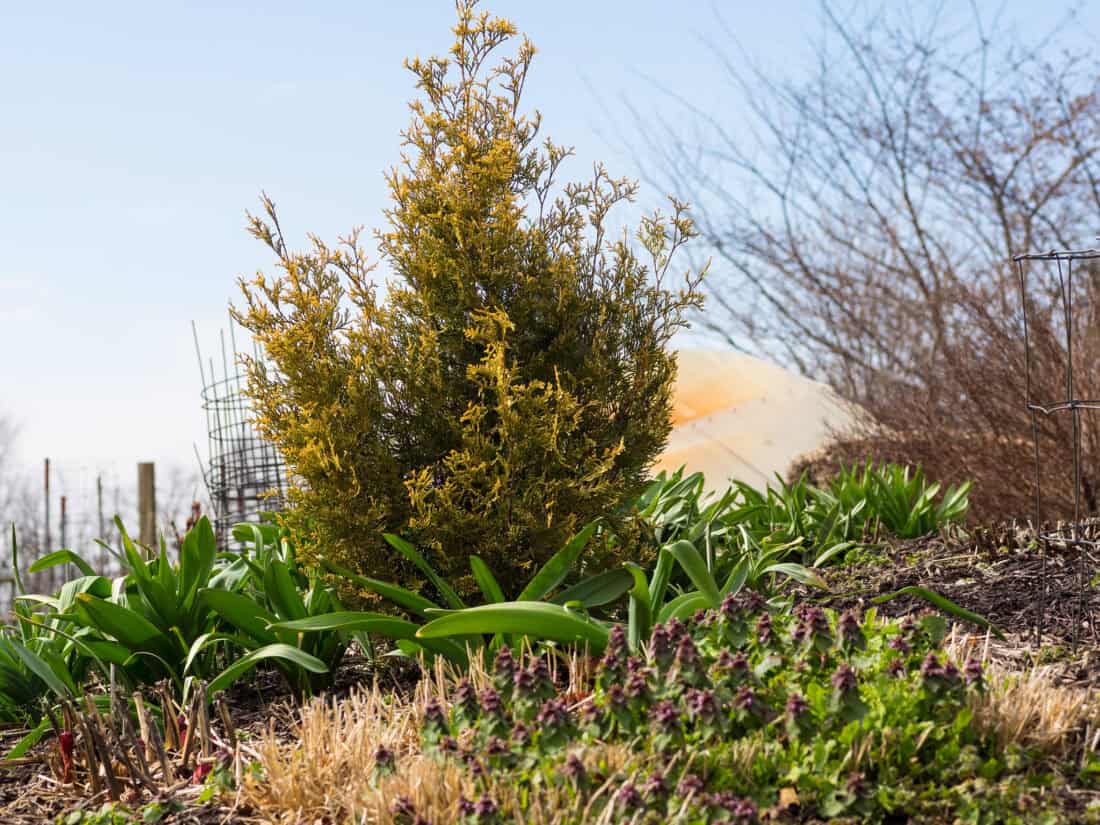
Thuja Occidentalis Sherwood Frost Folia
Design Benefits:
- Variegated Foliage: The Sherwood Frost Folia variety boasts striking variegated foliage with creamy white margins, adding visual interest and brightness to the landscape.
- Colorful Year-round Appeal: The evergreen nature of this variety ensures year-round interest with its dynamic foliage, even during colder months.
- Accent Planting: Sherwood Frost Folia’s unique coloration makes it an excellent choice as an accent plant, providing a refreshing contrast to other greenery in the landscape.
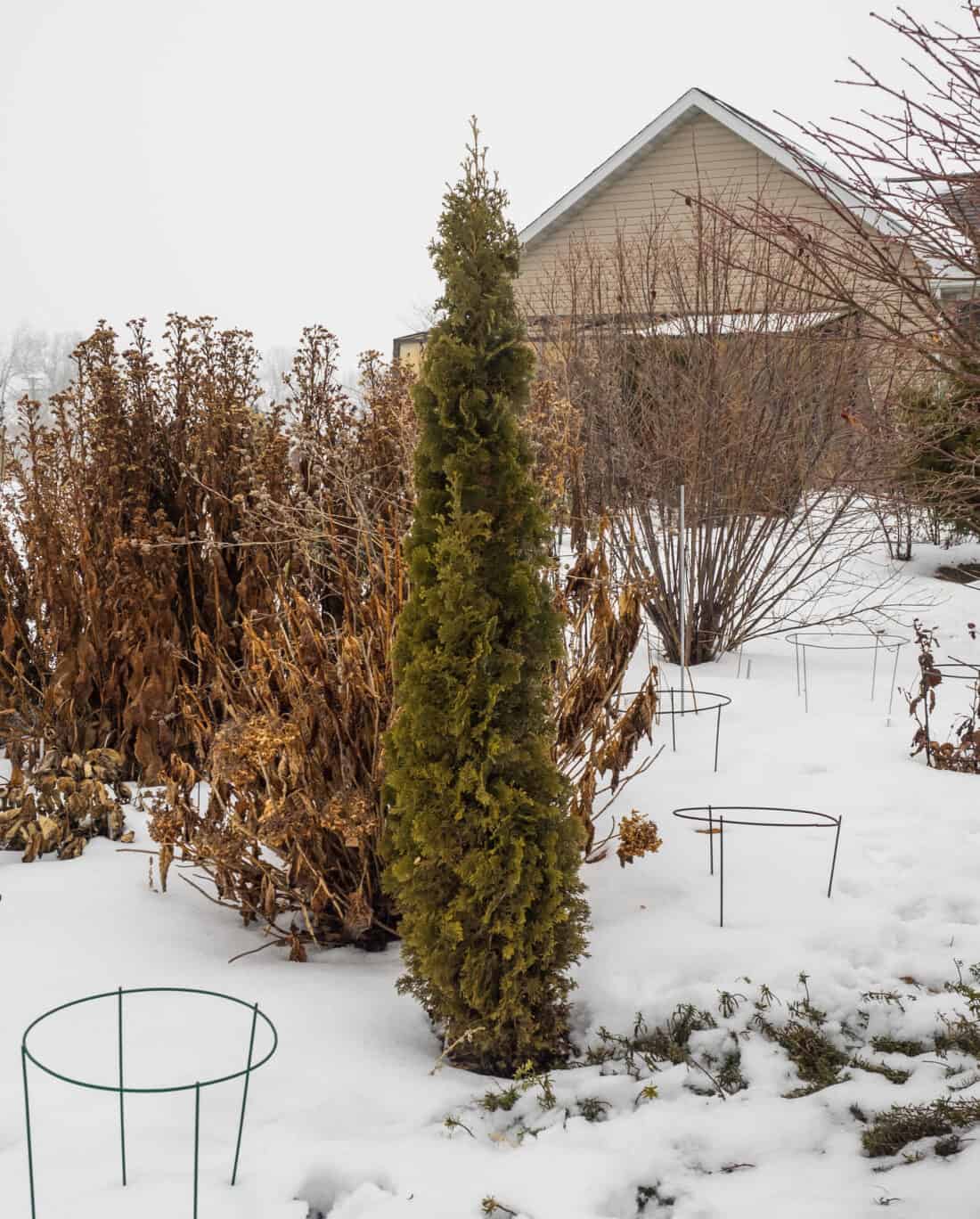
Thuja occidentalis Degroots Spire
Design Benefits:
- Narrow Upright Form: Thuja occidentalis Degroots Spire exhibits a tall and narrow form, making it an ideal choice for tight spaces or as a vertical accent in gardens with limited area.
- Privacy Screen: Planting a row of Degroots Spire creates an elegant and space-efficient privacy screen, effectively concealing unsightly views or creating secluded areas. (just know that it isn’t going to be a rectilinear green wall!)
- Architectural Interest: Its columnar shape provides an element of architectural interest, especially when placed as part of a formal landscape design.
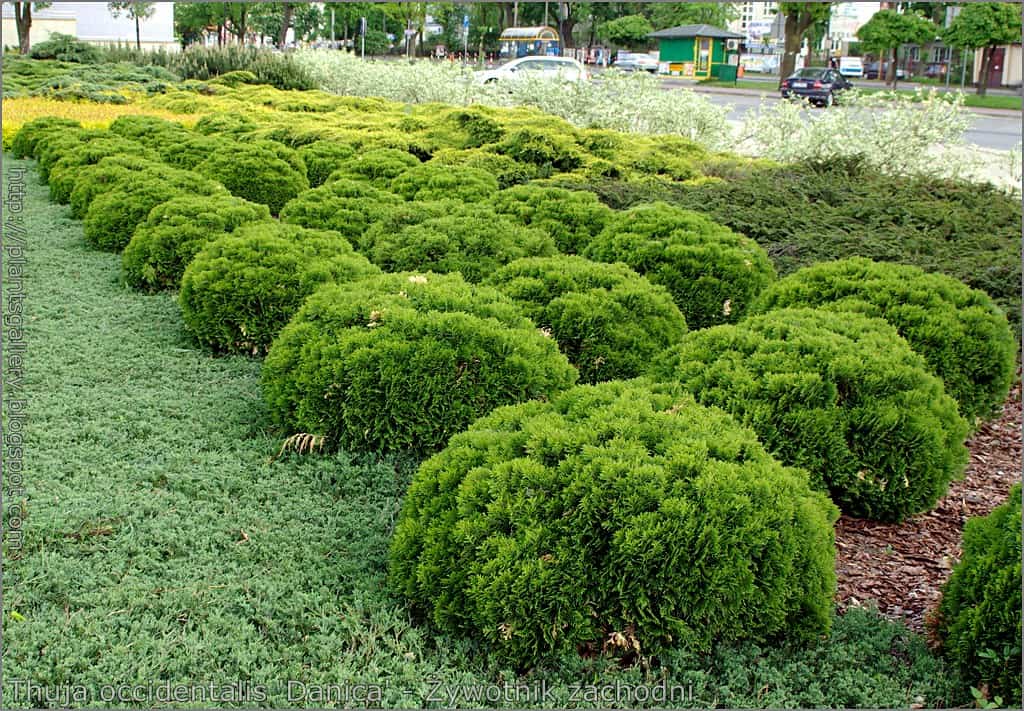
Thuja Danica
Design Benefits:
- Compact and Globe-shaped: Thuja Danica’s compact, globe-shaped form is perfect for adding structure and definition to garden beds and borders.
- Rock Gardens: Its small size and rounded shape make it a great addition to rock gardens or miniature landscapes, bringing a touch of greenery to small spaces.
- Low Maintenance: The slow-growing nature of Thuja Danica requires minimal maintenance, making it a practical choice for those seeking a hassle-free landscaping option.
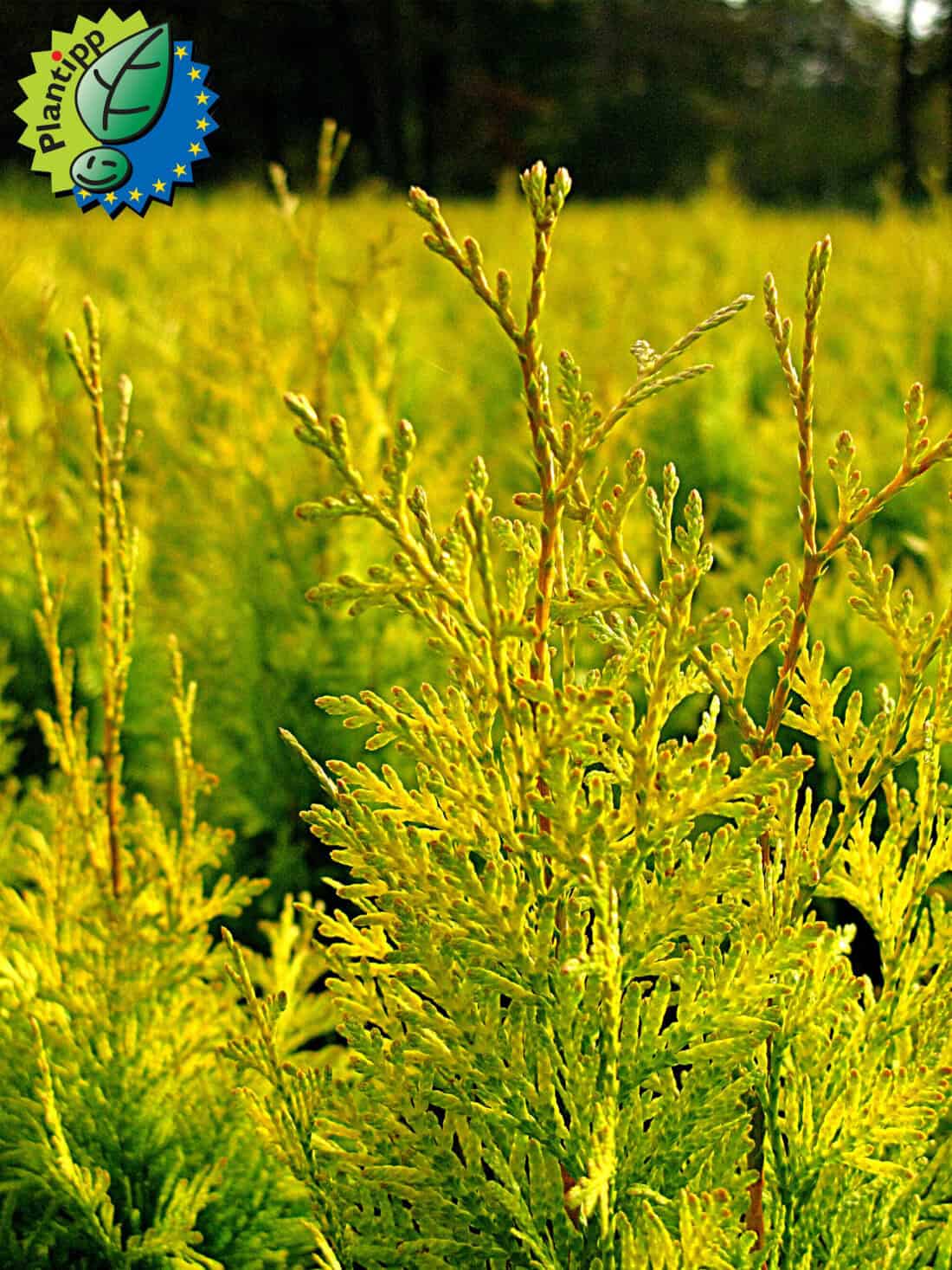
Thuja plicata Daniellow
Design Benefits:
- Vibrant Golden Foliage: Thuja plicata Daniellow showcases bright golden-yellow foliage, adding a burst of color to the landscape and creating focal points that draw the eye.
- Contrast and Highlight: This variety complements surrounding green foliage, creating a visually striking contrast in mixed plantings or garden arrangements.
- All-season Appeal: The evergreen nature of Daniellow ensures year-round visual interest, making it a great choice for adding warmth and vibrancy to winter landscapes.
Each of these Thuja varieties brings its own charm to the landscape, allowing for endless design possibilities to suit various styles, themes, and garden sizes. Whether it’s adding texture, color, formality, or architectural interest, these Thuja trees are sure to enhance the beauty and allure of any outdoor space.
And to give you a few ideas about how to use the ‘Green Giant’ and it’s similarly ubiquitous friends (in a good way), here is a little gallery.
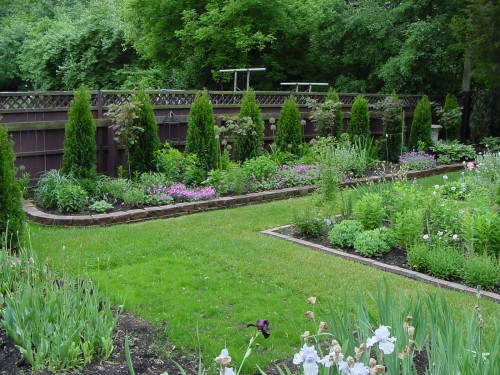
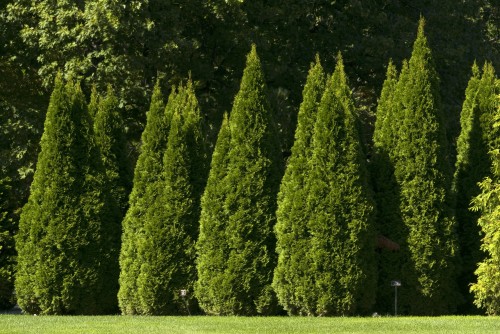
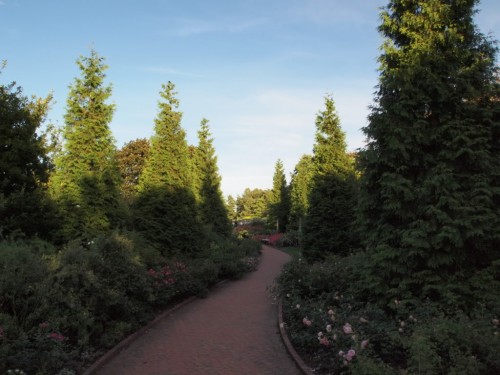
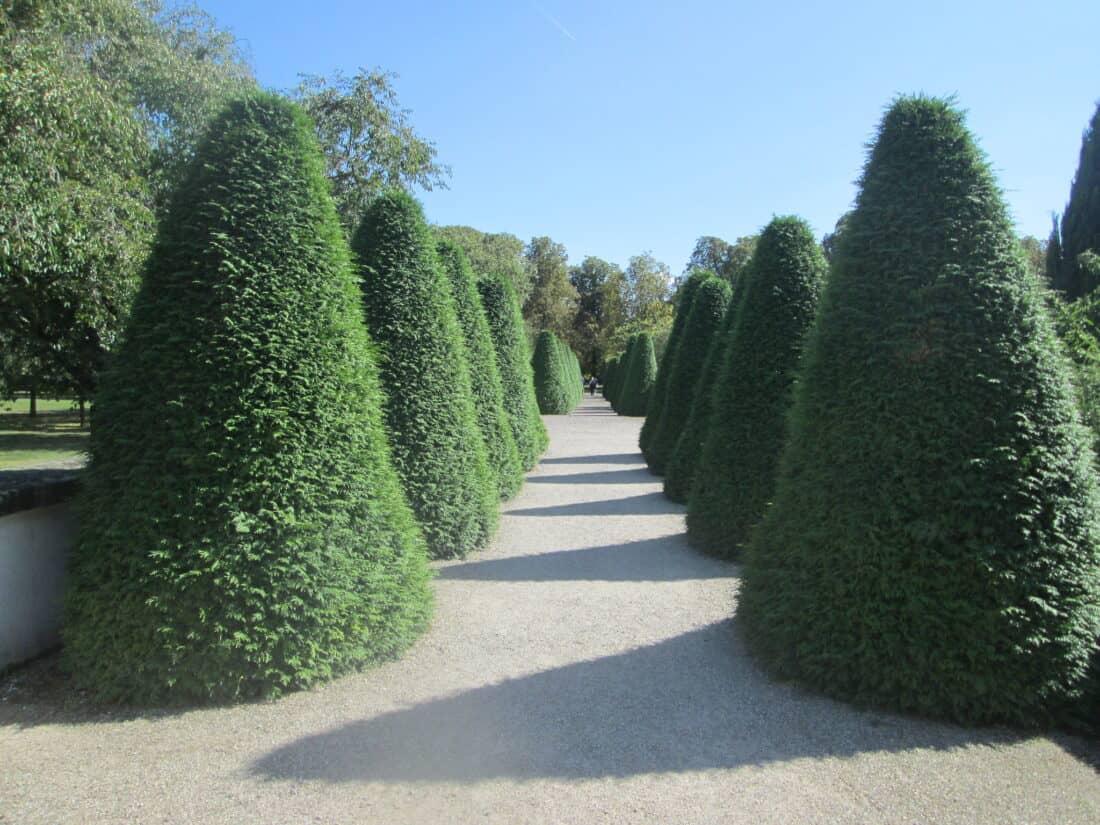
Other posts about Arborvitae and hedging that you might be interested In:
Share this post:
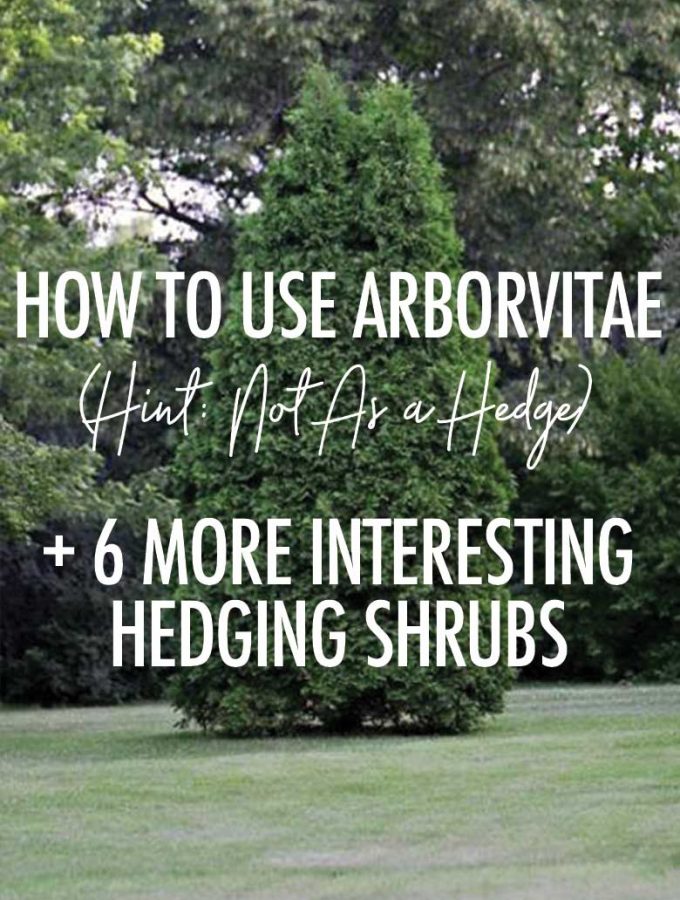
+comments+